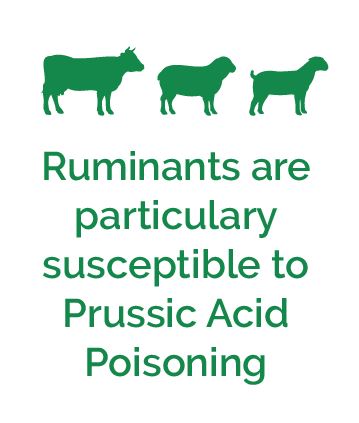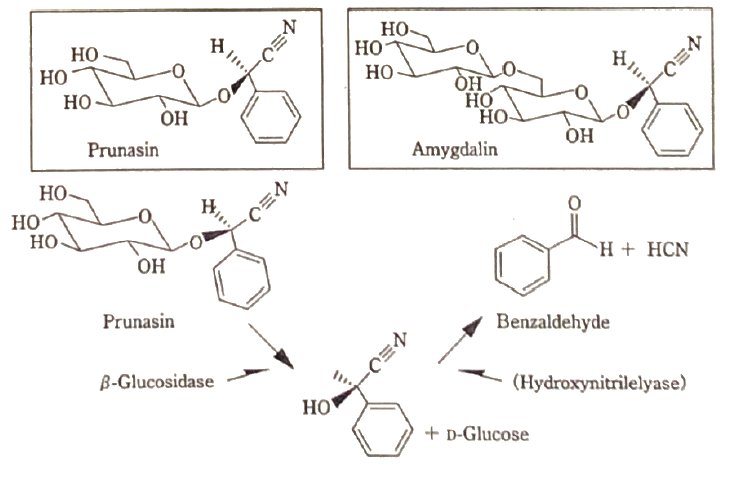| Hint | Food | 맛과향 | Diet | Health | 불량지식 | 자연과학 | My Book | 유튜브 | Frims | 원 료 | 제 품 | Update | Site |
|
독/약 ≫ 천연독 ≫ 식물독 ≫ 식물 식물독 : Prussic acid : HCN 식물의 위험요소 : 식물의 독 - β-Thujone - Prussic acid : 청산가리 - Hypericin - Goitrogens - Furocoumarins - Pyrrolizidine alkaloids - Coumarins - Safrole - Myristicin 호흡독 - Prussic acid - 청산가리 - 아미그달린 http://en.wikipedia.org/wiki/Cyanide_poisoning Prussic acid (also known as hydrocyanic acid, hydrogen cyanide, or cyanide) is formed when cyanogenic glycosides found in leaves, cherry, apple and peach pits, oak moss and other plant tissues are damaged and come into contact with beta-glycosidase or emulsion enzymes. The enzymes release the cyanide from the glycoside, and the cyanide prevents the body’s cells from utilizing oxygen, resulting in cellular necrosis and tissue damage. The mucous membranes and blood are bright red as they are oxygenated, but the cells in the tissues cannot utilize the oxygen. Clinical signs of prussic acid poisoning include rapid breathing, trembling, incoordination and in extreme cases, respiratory and/or cardiac arrest . Many fruit trees contain prussic acid glycosides in the leaves and seeds, but only negligible levels are present in the fleshy parts of the fruit . In the west African tropics, cassava is consumed as a dietary staple and inappropriate handling of the cassava prior to processing and consumption can result in a chronic form of cyanide poisoning termed “tropical ataxic neuropathy”, the result of demyelinization of the optic, auditory, and peripheral nerve tracts.  Prussic acid as found in flavoring ingredients is limited to 25 ppm in cherry pits (Prunus avium L. or P. cerasus L.), cherry laurel leaves (Prunus laurocerasus L.), elder tree leaves (Sambucus nigra L.), and peach leaves (Prunus persica (L.) Batsch) ; although the extract of bitter almond (Prunus amygdalus Batsch, Prunus armeniaca L., or Prunus persica (L.) Batsch) must be prussic acid free . There are no FDA regulations or guidelines restricting the presence of prussic acid in apple seed (Malus spp.), probably because extracts of these seeds have no economic value as flavor ingredients. Hydrogen cyanide (HCN), sometimes called prussic acid is a colorless, extremely poisonous liquid that boils slightly above room temperature, at 25.6 °C. HCN is produced on an industrial scale and is a highly valuable precursor to many chemical compounds ranging from polymers to pharmaceuticals. A hydrogen cyanide concentration of 300 mg/m3 in air will kill a human within 10–60 minutes. A hydrogen cyanide concentration of 3500 ppm (about 3200 mg/m3) will kill a human in about 1 minute. The toxicity is caused by the cyanide ion, which halts cellular respiration by acting as a non-competitive inhibitor for an enzyme in mitochondria called cytochrome c oxidase. Hydrogen cyanide has been absorbed into a carrier for use as a pesticide. Under IG Farben's brand name Zyklon B (German >Cyclone B, with the B standing for Blausäure - "Prussic Acid"),[37] it was used in the German concentration camp mass killing during the World War II (esp. in the Holocaust). The same product is currently made in the Czech Republic under the trademark "Uragan D2." Hydrogen cyanide was also the agent used in gas chambers employed in judicial execution in some U.S. states, where it was produced during the execution by the action of sulfuric acid on an egg-sized mass of potassium cyanide.  |
||||
|
|
|||